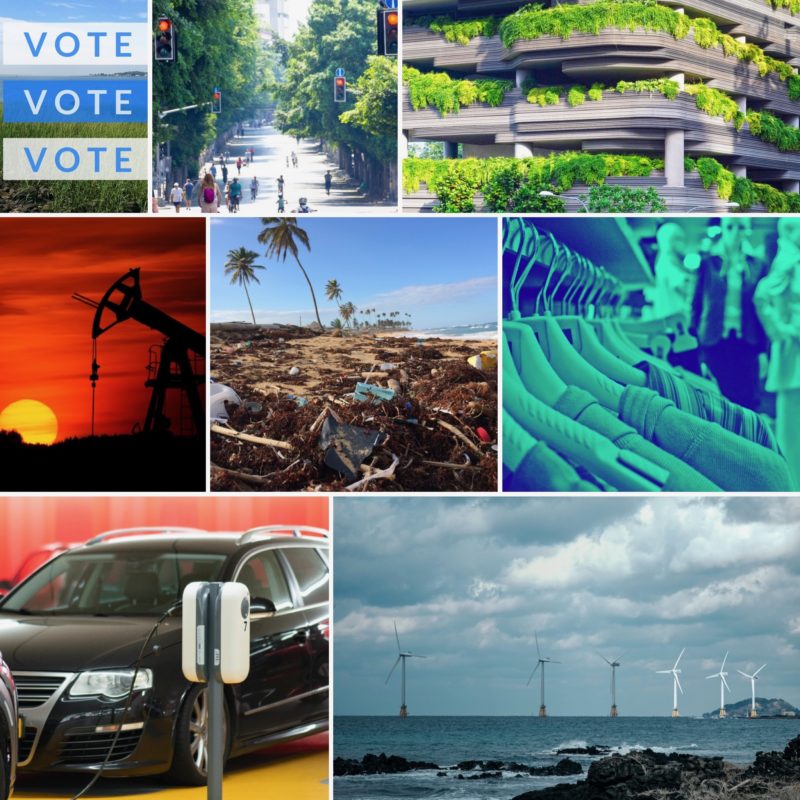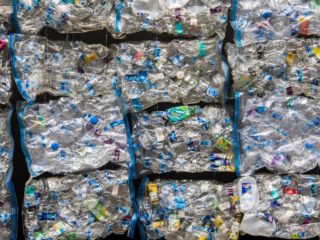Whether they’re personal changes or those made by the government and business sectors, here are the climate actions we need to see in 2022. Most are not new concepts but, in their present form, many are woefully small in scale. These climate actions are the bare minimum of what must be undertaken to help stem the tide of human-caused climate change.
While most of these measures are dependent on transformative actions undertaken by legislative bodies and corporate entities, individuals can do their part by putting pressure on lawmakers and businesses to accelerate the transition to a clean energy economy.
Table of Contents
A Climate-Action Culture
Reduce Greenhouse Gas Emissions
By now, it should be obvious that dramatic and deep reductions in greenhouse gas emissions are essential to prevent catastrophic global warming. This first measure is less climate action, but more a proclamation of how decarbonization must be embedded in all human activity.
In the public sector, the Biden administration has taken a step in the right direction with its pledge to make the US federal government net-zero by 2050. Several state legislatures have instituted climate action plans with emissions reduction targets, but more aggressive state and federal climate-focused policies must be enacted to curb rising emissions.
It goes without saying that the fossil fuel industry must transition away from traditional carbon-based operations, but that doesn’t leave other companies off the hook. Indeed, every aspect of private enterprise must decarbonize–from sourcing, production, and financing activities, to transportation, distribution, sales, and ultimately waste management.
Although comparatively less impactful, each of us must play a part in this transition by reducing our own carbon footprint. Our real power rests, however, with the ability to compel (agitate!) government and business to expedite these transformative changes. In 2022, we must intensify our efforts in this regard.
Allowing these three generators of human-caused emissions to putter along with minuscule or greenwashed actions will yield disastrous results for the planet.
Declare a Climate Emergency
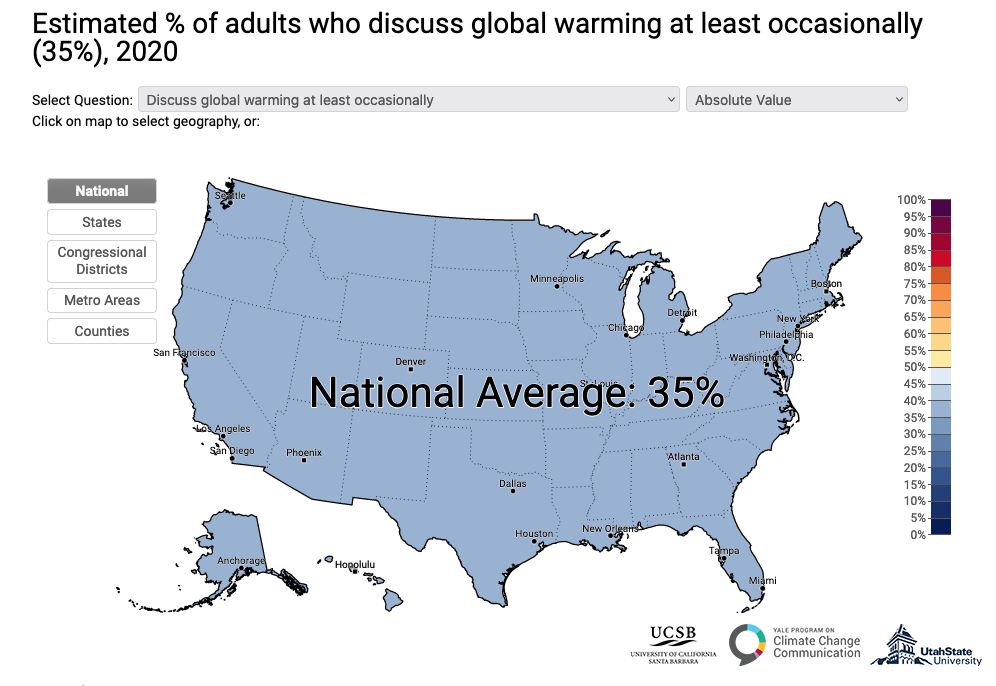
Most Americans believe that global warming is happening, but climate change is still viewed by most as abstract scribblings by scientists, not worthy of polite conversation or unseemly debates.
Until we acknowledge that climate change is here — its effects wreaking havoc on human and planetary life — substantive progress will not be made. The first step to meaningful change is recognizing the severity of the problem. In this regard, one of the most important climate actions for 2022 must be more declarations by governments that we face a climate emergency.
More challenging, but still possible, school districts should include climate change topics in throughout the curriculum. While climate deniers are vocal in their opposition, the vast majority of parents and teachers support the teaching of climate change.
To be sure, the political landscape is bumpy (to put it mildly), and there are parts of the country that remain fiercely entrenched in their climate denial trenches, but there are hundreds of jurisdictions where the proposal of a formal declaration of a climate emergency would be approved. It just needs to be added to the top of the to-do list.
Next step: making “ecocide” an international crime.
Climate Actions That Pull Policy Levers
End Fossil Fuel Subsidies
Despite governments calling for drastic decarbonization measures, many nations continue to prop up the fossil fuel industry and industry activities with massive fuel subsidies and tax benefits.
According to a recent IMF study, the fossil fuel industry benefits from subsidies of $11 million every minute, with 47% of natural gas and 99% of coal priced at less than half its true cost. Five countries — China, the U.S., Russia, India, and Japan — account for two-thirds of worldwide subsidies. It’s estimated that the U.S. subsidizes fossil fuels by about $649 billion per year.
Climate actions to look for in 2022:
Some members of Congress have proposed legislation to eliminate carbon credits for new oil and gas production. While prospects remain slim, lawmakers must persist in 2022 to phase out subsidies and loosen the stranglehold that fossil fuel interests have on our government.
In addition, the Biden administration should lead by example in instituting fossil fuel subsidy reform. This bold and decisive move would have positive ripple effects across the globe. As a Brookings Report on fuel subsidies notes: “As one of the largest producers and consumers of energy, if the United States indicates a transition away from fossil fuels, other countries are sure to follow.”
Ending New Fossil Fuel Projects

When the world’s leading energy forum — The International Energy Agency — demands an immediate cessation of all new oil, gas, and coal projects, the world takes notice. In addition to halting the development of new oil and gas projects and new coal-fired power plants, IEA’s roadmap for achieving net-zero emissions by 2050 calls for no new gas cars and aggressive investment in renewable energy.
At the federal level, the Biden administration has taken baby steps to pull the plug–most recently with the administration’s order for government agencies to immediately stop financing new fossil fuel projects overseas and prioritize clean energy technology.
Yet flows still continue: The US is poised to become a major exporter of crude oil and natural gas as production from shale fields surge. It doesn’t help that when the US government held an auction of oil and gas drilling leases in the Gulf of Mexico covering an unprecedented 80 million acres, it wasn’t–as the Biden administration subsequently admitted–legally obligated to.
Indeed, this administration, despite Biden’s campaign pledges to the contrary, has moved from supporting a moratorium on new oil and gas leasing on federal lands to approving more oil and gas drilling permits on public lands than even the previous administration.
Climate actions to look for in 2022:
Climate actions for 2022 must include legislation that curtails new fossil fuel projects. While the European Union has called for a phaseout of long-term natural gas supply contracts as part of its energy transition plans, progress in this country sputters along.
In addition, government oversight must be tightened to ensure that existing regulations have teeth. The EPA’s current rule on methane emissions, for example, has been criticized for being outdated and flawed.
A drastic scale-back of new carbon-intensive developments is imperative if this country is to achieve a significant reduction in emissions.
Ramping Up Renewables
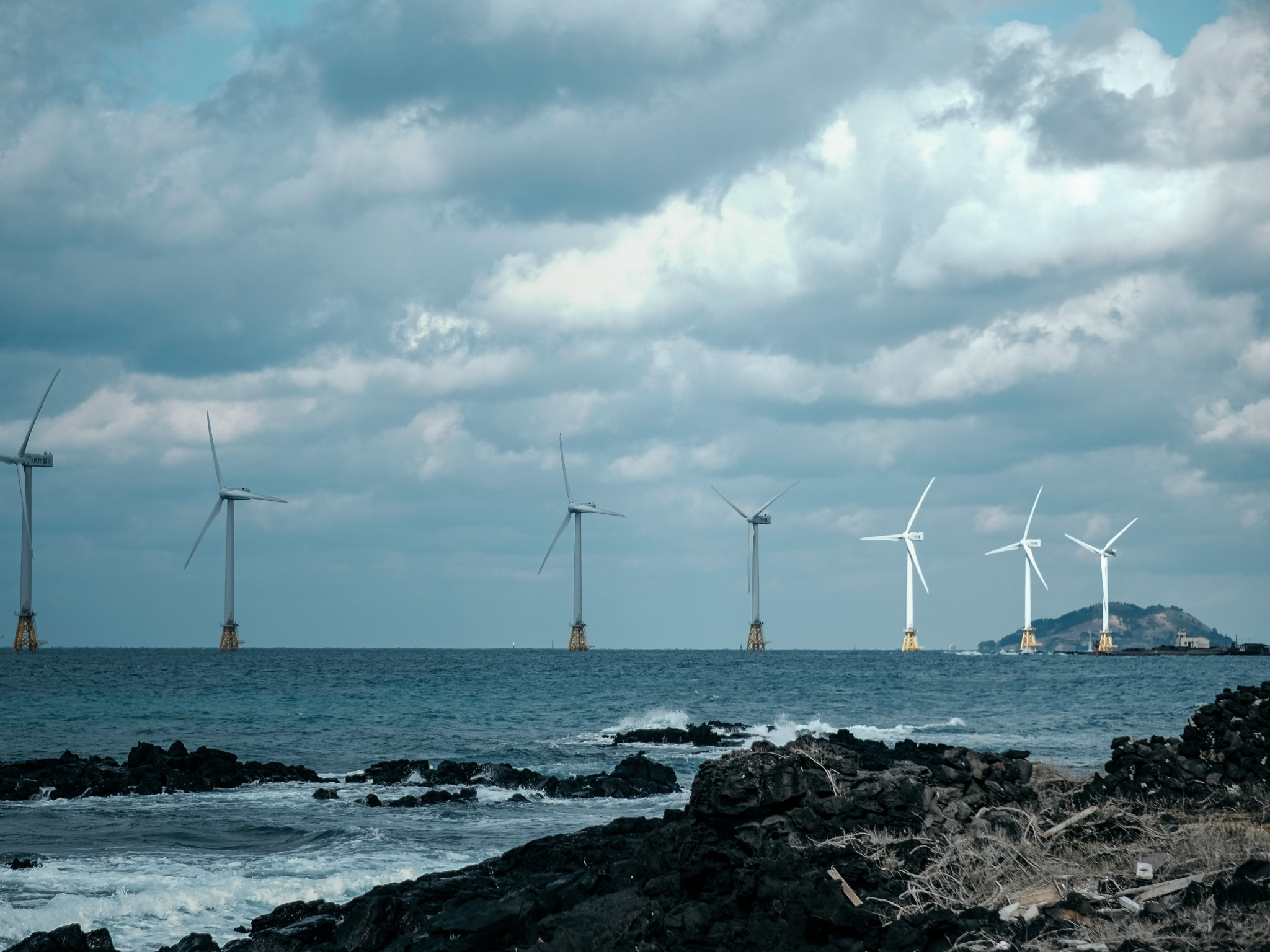
As fossil fuels head out the door, renewable energy must be positioned to fill the energy void. The good news is that over the years, renewable energy prices have dropped dramatically, but more must be done to build out clean energy capacity and supporting mechanisms, such as long-term energy storage.
The elephant in the room is our antiquated, crumbling, and disjointed grid system, which must be updated to support the integration of a new energy resource mix and ensure reliability.
Climate actions to look for in 2022:
Accompanying grid modernization are environmental justice issues associated with access to reliable, affordable power and more equitable coordination of transmission line siting to connect remote clean power sources with end-users. All this must be hashed out and sifted through if the goal, as most experts assert, is to electrify everything.
While the federal government is best poised to fund and coordinate a clean energy transition, state governments have already moved forward with various incentives to accelerate the transition and should continue to do so.
A Price on Carbon
A bookend to ending fossil fuel subsidies, putting a price on carbon as a mechanism to shift responsibility for emissions reduction from consumer to producer is widely acknowledged as an effective tool to combat climate change.
Carbon pricing mechanisms include various carbon taxes and cap-and-trade systems. Globally, carbon pricing instruments cover over 20% of greenhouse gas emissions, but in the US, carbon pricing has progressed in fits and starts. The most enduring carbon pricing program is the Regional Greenhouse Gas Initiative, but other US programs, including the Transportation and Climate Initiative, and a proposal in Washington State, have sputtered.
Climate actions to look for in 2022:
Despite hurdles, lawmakers continue to press for the integration of carbon pricing into their climate strategies, most recently in Pennsylvania with the Governor’s proposal to join RGGI. In 2022, both the public and private sectors should incorporate carbon pricing into their climate actions.
Decarbonizing Transportation
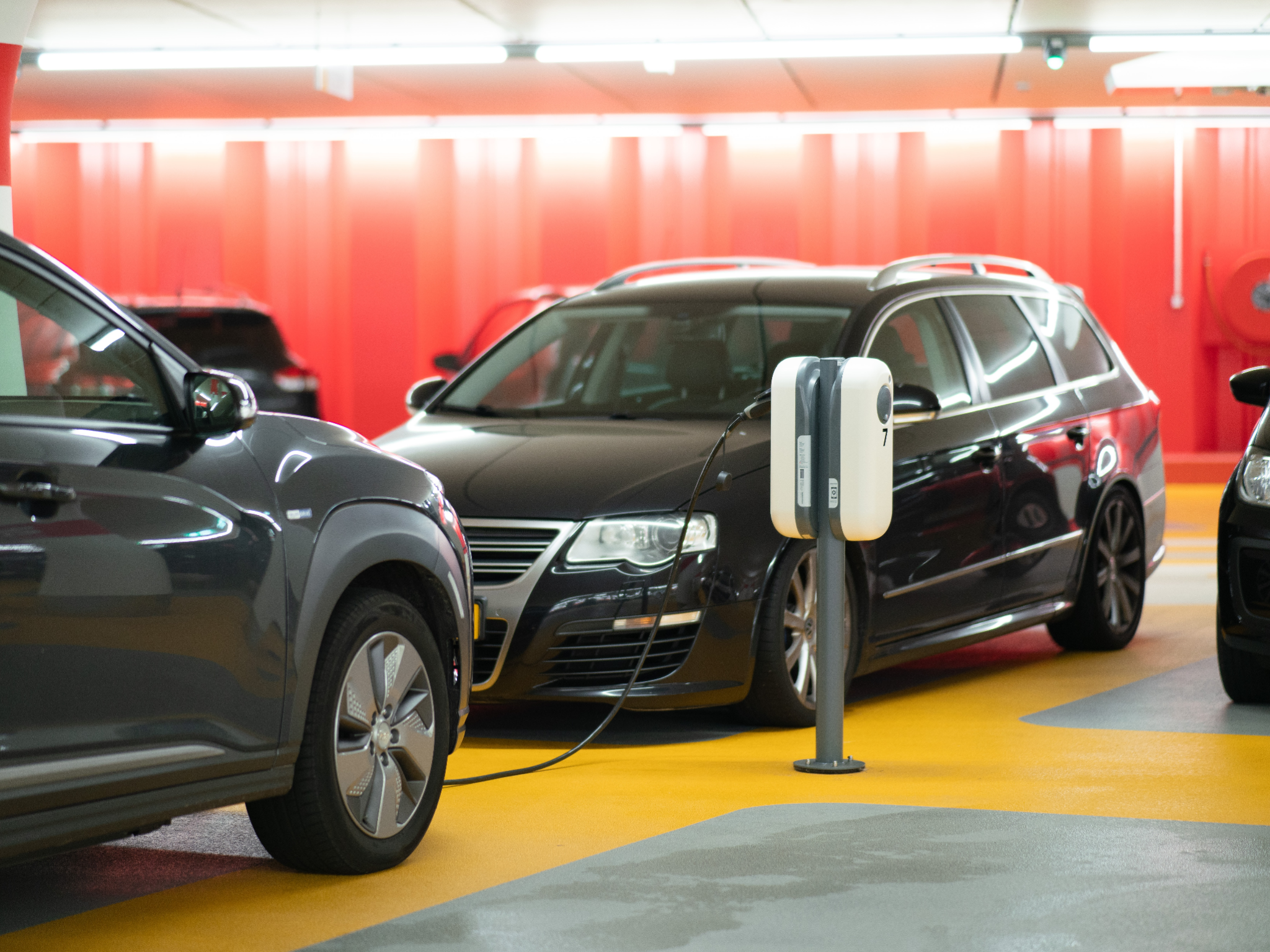
The transportation sector accounts for 29% of total US greenhouse gas emissions, with road travel–primarily in the form of passenger vehicles–accounting for three-quarters of transport emissions. The Biden administration has responded by setting a goal for half of all new car and truck sales to be electric by 2030 and has supported proposals for tax credits on the purchase of new and used electric vehicles.
While these measures are a start, much more needs to be done and the US lags behind Europe and China in implementing aggressive EV policies.
Climate actions to look for in 2022:
- EV stations. Churning out hundreds of thousands of EVs only works if there’s an underlying infrastructure to support it. To that end, Biden’s infrastructure plan contemplates a $7.5 billion investment to build out a nationwide EV charging network of 500,000 charging stations–a nearly 10-fold increase in the number of stations. Any expansion of charging stations, however, needs to ensure that at-home and workplace charging stations are accessible and affordable for all.
- Alternative fuels. Not every mode of transport can be easily and rapidly electrified, in particular, long-distance trucks, aviation, and shipping. Low-carbon fuels, such as biofuels or hydrogen, are one option. These fuels have the potential to allow conventional engines to operate with low emissions. In Sweden, for example, conventional fuels must be blended with biofuels to reduce greenhouse gas emissions.
- A cultural shift. The other piece of the puzzle is encouraging a cultural shift away from Americans’ deep-seated reliance on private vehicle travel. This is undoubtedly a long-term goal, but one that is essential for transitioning to a decarbonized economy. Policies, programs, and funds should be directed to discourage unnecessary highway expansion while providing incentives for public transport, ride-sharing, and the creation of walkable communities. This type of cultural shift is most successful when introduced and implemented in local communities as part of a beautification project or initiative designed to promote community wellbeing.
Decarbonizing Buildings

Decarbonizing the transportation sector is critical, but greening the nation’s buildings should also be high on the list of climate actions for 2022. The carbon emissions from buildings (13% of total US greenhouse gas emissions), particularly in cities, are significant, and various policy measures can reduce their carbon footprint.
At the federal level, Biden’s net-zero pledge will require federally owned buildings to achieve no net emissions by 2045, and all electricity sourced from renewable energy. The Build Back Better Act contemplates measures to reduce carbon emissions from buildings and homes, along with other structures, including hotels and schools.
Cities are also stepping up to electrify buildings: Seattle has banned fossil fuels for heating in new construction, New York, where buildings account for 68% of greenhouse gas emissions, just passed its own ban on gas heat, water boilers, and stoves in new buildings, and Ithaca will decarbonize its entire building stock.
Climate actions to look for in 2022:
- Greening of building codes to cap emissions in existing buildings and promote low-energy new construction.
- Increasing federal grants and funding to assist states and municipalities with adopting green and zero-energy building codes.
- Tax and financial incentives and rebates to encourage retrofitting of existing buildings and homes. Numerous states, for example, provide incentive programs for obtaining LEED certification in new building construction.
- Increasing education and training of relevant stakeholders and the public about incentives, renewable energy offerings, and proper disposal of building construction material.
- Turning cities into carbon sinks. Perhaps more aspirational than a 2022 climate action measure, but worthy of noting: Some design firms are calling for carbon net-negative architecture that elevates materials, technologies and strategies to turn buildings at all scales into net-negative carbon emitters. The goal would be to transform cities into carbon sinks.
Invest in Green Infrastructure

One of the more important, but frequently neglected, climate actions is environmental conservation. Our culture has historically viewed nature as something separate to be dominated or segregated for human enjoyment. This approach — as evidenced by levees or seawalls that frequently fail, to land degradation that destroys entire ecosystems — hasn’t been too successful for humans or the environment.
Shifting our mindset from dominating nature to working with nature helps both humans and the planet. Indeed, a robust expansion of nature-based infrastructure projects will help make communities more resilient to the damaging effects of climate change, such as devastating floods, droughts, hurricanes and sea-level rise.
As ecologist Carl Safina and his colleagues demonstrate in a recently published paper on environmental conservation, “greatly expanded protections of wild things and wild places and major downsizing of humanity’s footprint are crucial to stabilize climate and stanch species losses.”
Despite the incontrovertible link between land degradation and climate change, this country has no substantive plan for restoration and conservation. Even a commitment is lacking. Indeed, while more than 100 countries have pledged to protect 30% of land and marine spaces by 2030, the US — along with Brazil, China and Russia — has yet to make the pledge.
Climate actions to look for in 2022:
- Biodiversity protection to support climate regulation and help mitigate extreme events. Protecting natural ecosystems by rewilding parts of cities and towns, expanding and connecting habitats through the creation of green corridors or linear open spaces supports native plants and wildlife.
- Tree planting programs that grow and protect tree canopies, particularly in urban settings.
- Green stormwater protection in the form of permeable pavements, bioswales, or rain gardens.
- Wetlands restoration projects to protect wetlands, which have shrunk by more than half in this country. Along with acting as a carbon sink, wetlands provide natural flood mitigation and water filtration services.
- Green infrastructure policies and laws, such as tree ordinances and wetlands protection laws, that protect trees and open spaces.
- Living shorelines for flood protection and coastal erosion, such as the ambitious Breakwaters project in New York, or Seahive in Miami.
Holding Plastic Producers Accountable for Plastic Pollution
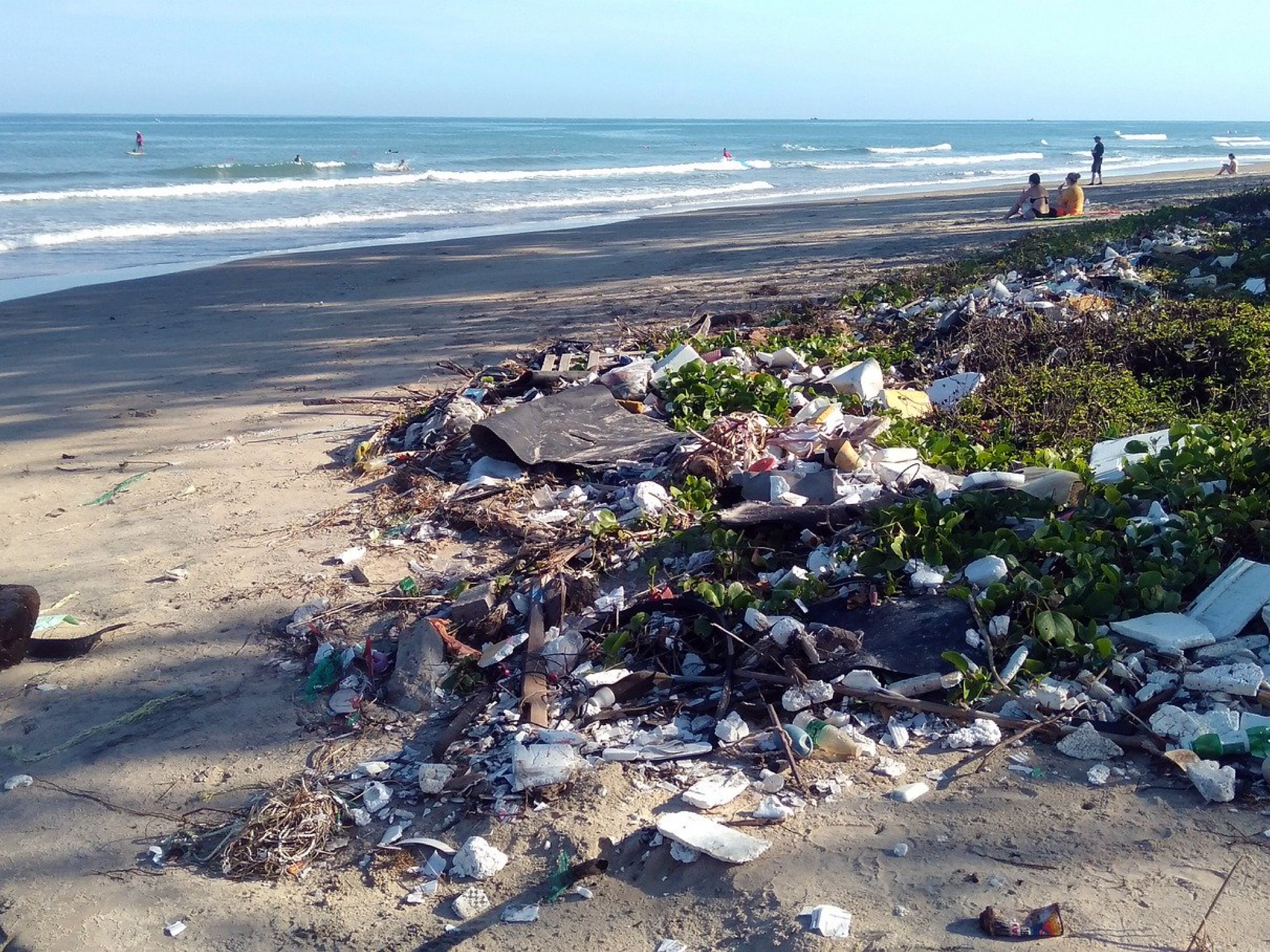
Plastic is just another type of fossil fuel, yet it is often overlooked as a climate culprit.
Despite being the nation that generates the most plastic waste in the world, the US has yet to pass meaningful federal regulations to curb the ever-increasing deluge of plastic pollution burying the planet. All too often, the response to managing plastic waste are end-of-life measures, such as recycling, which doesn’t address the root of the problem: continued over-production of unnecessary single-use plastic and packaging.
Compounding the problem, fossil fuel companies have pivoted from traditional markets to plastic production, with plastic production projected to surge in the years ahead.
At present, there are a hodgepodge of local and state-level regulations that twist and turn in the wind depending on the political makeup of legislatures. Complicating matters is a concerted effort by industry interest groups and supportive lawmakers to override waste-reduction legislation with their own preemption laws.
With the recognition that plastics could release more emissions than coal by 2030, the federal government must take the lead in coordinating a federal response to this growing climate crisis.
Climate actions to look for in 2022:
- Break Free From Plastic Pollution Act This proposed bill would help consolidate the nation’s piecemeal approach to plastic pollution and waste while shifting the burden of responsibility for waste reduction from consumer to producer.
- Leadership through action from the Biden administration. The Presidential Plastics Action Plan outlines a framework that the president could follow to reduce and regulate plastics production–actions that can be taken without the support of Congress. The Biden administration can take the lead in tackling this crisis with a stroke of a pen.
- More Extended Producer Responsibility legislation. Maine and Oregon made history this year by being the first two states to pass plastics-focused EPR laws, while California passed an aggressive suite of recycling, composting, and plastic producer accountability bills. Other states, including New York, are considering EPR legislation, but until there is a comprehensive federal law, the states must take the lead.
- Single-use plastic bans. Other countries, including Canada and EU countries, have committed to reducing single-use plastic usage through various regulations, fees and bans. While cities, counties and states have also passed similar legislation, more needs to be done at the state and federal levels to drastically curtail single-use plastic production.
Paying For It All: Funding the Transition to a Decarbonized World
It’s all well and good for governments to commit to various climate actions, but if they can’t afford the transition to a decarbonized economy, these pledges become meaningless.
Recognizing that collective action yields global benefits, wealthier nations pledged at COP15 to assist low-income nations with their climate adaptation and decarbonization measures through annual payments of $100 billion by 2020. Twelve years later, that commitment has not materialized and is now pushed back to 2023.
With estimates by the UN’s Intergovernmental Panel on Climate Change of $2-4 trillion per year needed to stave a surge past 1.5 degrees Celcius, an infusion of public and private funds are desperately needed, along with expanding access to funds.
Corporate-Focused Climate Actions
Shifting to a Circular Economy
Shifting to a circular economy creates a pathway towards a more decarbonized economy. According to the 2021 Circularity Gap Report, circular economy strategies could reduce global greenhouse gas emissions by 39%, increase the share of materials that are reused from 8.6% to 17%, and prevent an increase in global warming beyond 2 degrees Celsius.
While the EU espouses a circular economy action plan in its European Green Deal, policymakers, financial institutions, and companies in this country must promote and enhance circular solutions to decarbonize the entire life cycle of products. Areas of focus include reducing waste and pollution, circulating materials and products, and regenerating nature.
Climate actions to look for in 2022:
Some companies are already taking steps to incorporate circular strategies into their business models, including making significant changes in their supply chain processes, but many more must follow in 2022 and beyond. Fortunately, there are tools to help companies make the transition, including frameworks to measure emissions reductions.
Intensifying Greenwashing Enforcement

Greenwashing is a pervasive and ubiquitous problem across every sector of the economy. From consumer products and financial services to Big Oil, it shouldn’t come as a surprise to learn that as many as 40% of green claims made by online companies are misleading, while other studies show an even higher greenwashing rate of 99% of over 1,000 consumer products.
So why does it keep happening? One reason is consumer confusion. According to a recent Yale study, when Americans are asked why they don’t punish companies that oppose steps to reduce global warming, 71% say they do not know which companies to punish.
The EU is taking the lead with a recent set of finance rules designed to crack down on greenwashing of financial products and have incorporated greenwashing methodologies into their European Green Deal. To be sure, part of the onus is on consumers to educate themselves, but most of the responsibility must rest on this government to intensify and amplify existing greenwashing regulations.
Divest, Baby, Divest
2021 was a year that experienced an increase in fossil fuel divestments–a banner year with headline-grabbing announcements of shareholder revolts, including pension funds and academic institutions shedding their carbon portfolios. One reason for the uptick is that investors can see the rocks ahead and are jumping ship before being left with a pile of stranded assets to offload, but the divestment movement has accelerated thanks to significant external pressure from investors and shareholders.
With a legislative and regulatory framework that’s weak on substance or enforcement, activists, shareholders, and investors are taking action with promising outcomes. With this year’s successes, let’s see this trend continue and intensify in 2022.
On the flip side, green investing has taken off. 2021 turned out to be a successful year for climate investment as savvy investors seized opportunities in the global energy transition.
The US regulatory system must be updated to provide additional protections for investors, but looking ahead to 2022, prospects are good for increased investment as individuals, institutional investors, and companies seek to profit from decarbonization.
Sustainable Banking
On the financing end, the carbon footprint of the American financial services sector is significant. A recent report finds that in 2020, the 18 largest U.S. banks and asset managers were responsible for financing the equivalent of 1.97 billion tonnes of CO2 equivalent. To put this number in perspective, if these firms were a country, they would be the fifth-biggest emitter in the world. To make matters worse, banks have increased lending to fossil fuel entities even after the 2016 Paris Accord.
While strengthened regulatory oversight is needed to accelerate decarbonization of the financial sector, banks must prioritize financing for sustainable companies and dramatically curtail access to capital for carbon-intensive industries. Indeed, lenders can facilitate decarbonization using loan eligibility and rates as incentives for change.
One advisable action for 2022 is the passage of the Fossil Free Finance Act, that, according to sponsors Rep. Mondaire Jones and Sen. Ed Markey, would “require banks and other large financial institutions to wind down their lending to polluting industries, in line with our national climate targets. It also would hold the largest banks accountable to scientifically necessary climate targets.”
A growing segment in the sustainable banking space are impact-driven financial entities, such as climate fintech platforms, which typically partner with climate-focused neobanks. Not only do these entities offer customers an alternative to traditional banking services, but they also create ripple effects across the financial services sector, motivating change among traditional banks as they compete for climate-savvy customers.
As always, do your homework when evaluating any new financial services firm, including neobanks.
Focusing on Food and Fashion

With pressure focused on the fossil fuel industry to decarbonize, it’s easy for two other carbon-culprits to escape scrutiny.
The fashion industry is responsible for approximately 10% of global greenhouse gas emissions. In response to the industry’s significant carbon footprint, 130 fashion retailers and organizations at the COP26 Summit committed to a 50% reduction in emissions in the next decade with a goal of net-zero by 2050.
All this sounds promising, but a significant number of fashion brands have chosen not to sign on to the Fashion Industry Charter for Climate Action. In addition, these emissions are projected to increase in the absence of aggressive abatement strategies. According to a McKinsey report on the fashion industry current commitments are insufficient to achieve its target by almost twofold.
More accelerated abatement at a reasonable cost. In 2022 and the years ahead, areas for improvement include decarbonizing production processes that exploit natural resources, reducing excessive packaging and improving recycling and sustainable waste disposal practices.
The climate impact of the food system (food and agricultural industries) is also significant. The emissions from global food production — in particular, meat and dairy — are substantial (over 25%) due to the resource-intensive nature of production processes: Global emissions from livestock represent 14.5% of total greenhouse gas emissions and cattle represent a sizable share – about 62% – of the livestock sector’s emissions.
Regardless of the impact, food system emissions were not at the top of the agenda at COP26. Looking ahead to 2022, more pressure must be placed on the industry to decarbonize their traditional business model, but increased transparency will go far in accelerating this transition. For more on the climate impact of the food industry, see Green That Life’s articles on climate change and food production, food waste, and the meat and dairy’s industry’s resistance to climate action.
Climate Actions We All Can Take
Decarbonizing Your Life
There’s an ongoing debate that involves a lot of finger-pointing over who’s to blame for the climate crisis and who’s responsible for the cleanup. Corporate America points to consumers (“we’re just responding to consumer demand”). Individuals point to the producers of all this climate-causing stuff: oil, plastic, agricultural products, timber…
There’s a bit of truth in both arguments, but at this point, does it really matter who’s to blame? Along with strong leadership from our government, we all must work towards a solution.
The second part of the debate — responsibility — rests on all of us: the public and private sectors, and individuals. A slew of studies points to the power of people in making an impact on climate change — not only with changes in their individual lives but through citizen activism in various forms.
So now that you’ve reached this section of 2022 climate actions, take stock of your life and determine how you can make changes in 2022 to help reduce the carbon footprint of your activities.
Green That Life articles related to determining and reducing your carbon footprint include:
- What is Carbon Footprint and Why Should You Care?
- 4 Simple Ways to Reduce Your Carbon Footprint in Your Home
- 3 Essential Ways to Reduce Carbon Footprint Outside Your Home
Educate Yourself
Unless and until our government establishes greater consumer protections for its citizens, it is, unfortunately, left to us to make educated choices, spot greenwashing tactics, and be apprised of the latest climate news and facts. Green That Life is here to help in this regard.
See Green That Life’s sections on Green Explainers and Green Terms for basic information, along with climate news and climate science resources here. Green That Life’s books section and climate change books provide more in-depth coverage of every climate category.
Here are a few topic-specific articles on some of the major contributors to climate change, the tactics employed by the main players in these industries, along with a few explainers:
- Meat and dairy industry and here
- Food waste and climate change and how to make climate-friendly food choices
- The fashion industry and climate change
- (Single-use) plastic waste and climate change
- Surprising greenwashing examples
- In case you need a refresher: 7 Sustainable Habits That Aren’t Sustainable
Breaking Barriers Through Effective Communication
While piercing the climate denial bubble seems impossible, working on opening the eyes of a few skeptics is entirely feasible.
This war of attrition is only successful, however, if we all participate. Before you object (vigorously, I suspect), consider how climate change is embedded in every human activity. Every conversation topic is a climate change topic, so keep talking, but with just a bit more purpose. The goal needn’t (though it could!) be to transform your neighbor into the next Bill McKibben, but he could become an unwitting climate believer from your purpose-driven, but casual conversations, about, say, the recent uptick in flooding and hurricanes in your town.
Focusing on personal connections and local issues helps loosen the tribal pull of political parties’ hold on climate conversations and moves the discussion into community-focused topics. So make 2022 the year to broaden a climate skeptic’s (or multiple skeptics’) point of view on any number of environmental issues. To help you get there, take a look at Green That Life’s guide for successful communication strategies and my article on how to spot common climate change myths.
Consumer Activism
It’s extremely difficult to distinguish between legitimately sustainable businesses and those that are greenwashed. So how can you tell the difference? Patagonia CEO and founder, Ryan Gellert, puts it best: “It is absolutely valid and important that people approach what they hear from business with a high level of cynicism.” In short, trust, but verify when making purchases.
Here again, is the “educate-yourself” mantra. As always, do some background digging to determine which businesses are more sustainably-focused. By supporting companies that are truly climate-friendly while rejecting those that aren’t, consumers can help nudge (better yet, push) corporate America to decarbonize.
See Green That Life’s consumer guides and lists of sustainably-focused companies:
- What is Greenwashing? 5 Ways to Avoid it
- Green or Greenwashing? How to Clean Up Cleaning Products Confusion
- 6 Key Tips for Sustainable Fashion
- 6 Sustainable Fashion Brands You Should Know About
- 25 Eco-Friendly Reusable Masks
- Are Compostable Products Really Compostable? How to Tell and Which to Get
- 5 Plant-Based Foods You Think Are Planet Friendly But Aren’t
Putting Pressure on Government

Sadly, not enough climate-conscious citizens participate in the most powerful form of change — voting. All too often, our calls for change are drowned out by those who do. By lobbying for change, or doing the bare minimum – voting in every single darn election – we can edge the needle forward.
In addition to becoming an informed and active voter, consider taking your climate actions one step further in 2022 and actively lobbying your lawmakers (local, state, and/or federal) to sponsor or support climate-related policies.
Start or Join a Climate Action Group
Whether you donate to, join, or start your own climate advocacy group, environmental activism is a powerful and effective vehicle for change.
Even with a small group of passionate citizens, it’s entirely possible to advance climate goals. Recent examples can be found in student-led divestment movements on colleges across the country, or consider the success of grassroots groups and local citizens to topple the mighty Keystone Pipeline project. In my own experience, a handful of volunteers on a shoestring budget engineered the passage of one of this country’s first plastic bag laws.
Green That Life’s citizen activist guide will provide you with all the steps needed to set up your own group. So as you enter the New Year, start something new. The planet — and people — will thank you for it.

